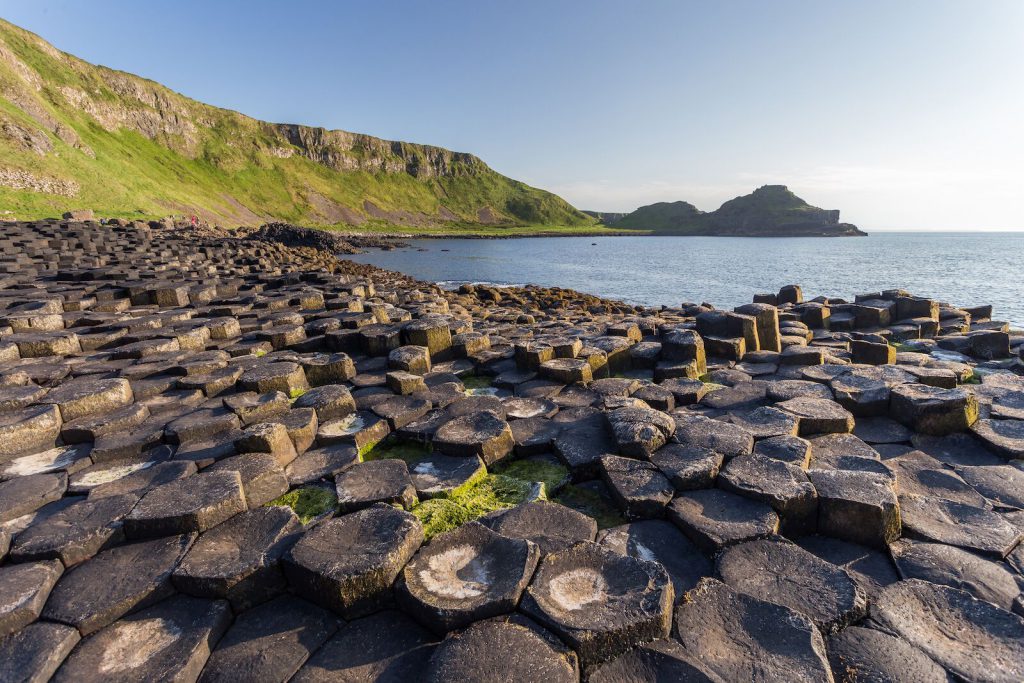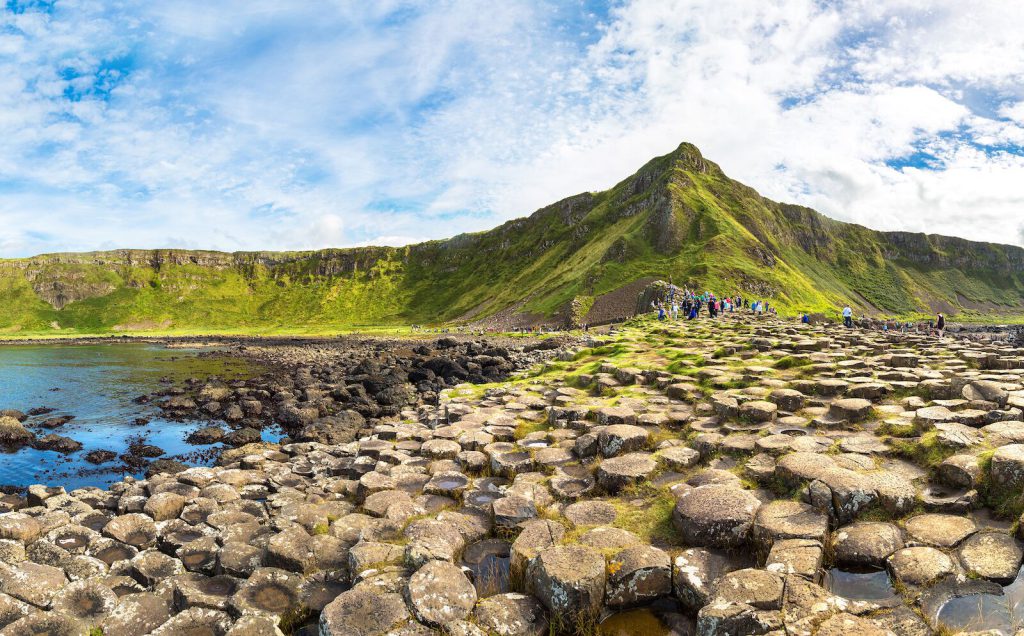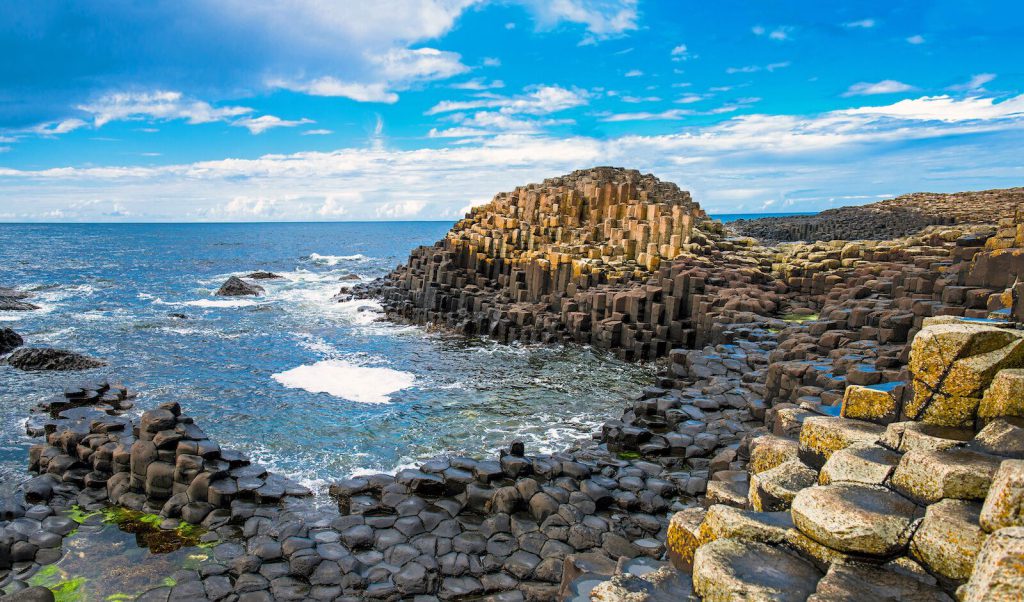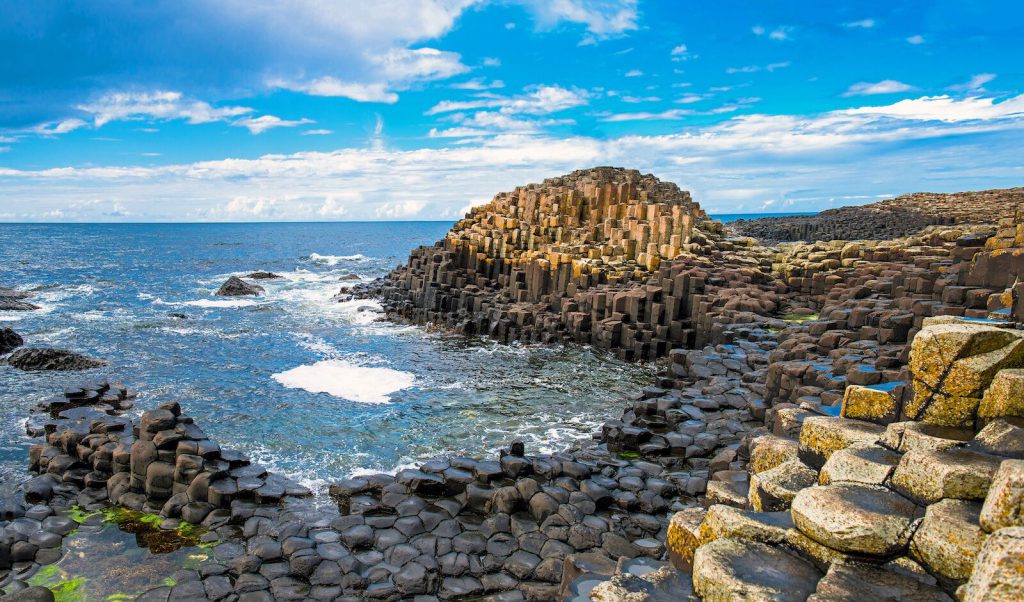Standing on the edge of the Atlantic, the Giant’s Causeway is a place where myth meets geology, and nature itself seems to have sculpted a masterpiece. Located just outside the village of Bushmills on Northern Ireland’s rugged north coast, this UNESCO World Heritage site draws visitors from across the world — and for good reason. With its 40,000 interlocking basalt columns, this natural wonder looks like something straight out of a fantasy world.
A Natural Marvel Born of Fire and Time
Around 60 million years ago, intense volcanic activity occurred as Europe drifted away from North America. As molten lava flowed across the landscape, it cooled and contracted, fracturing into the strikingly regular hexagonal columns we see today. Over the millennia, the pounding waves and relentless weather shaped these formations into the dramatic “stepping stones” that stretch from the cliffs into the sea. The result is a geological wonder that’s both mesmerizing and mysterious.

Legends of Giants and Rivalry
No Irish landmark would be complete without a legend — and the Giant’s Causeway has two. According to folklore, the mighty Irish giant Fionn Mac Cumhaill (Finn McCool) built the causeway across the sea to face his Scottish rival, Benandonner. When Benandonner saw the size of Fionn, he fled in terror, tearing up the bridge as he ran. Another tale tells of Fionn building the path to reach his true love in Scotland, only for his grandmother’s storms to repeatedly destroy it — a story of determination, heartbreak, and devotion.
Exploring the Causeway
Visitors can access the Giant’s Causeway for free, though parking at the National Trust Visitor Centre is reserved for ticket holders. The Visitor Experience ticket includes guided and audio tours, interactive exhibits, and parking. For those seeking adventure, the Clifftop Experience offers a breathtaking five-mile guided hike overlooking the coastline — a three-and-a-half-hour journey showcasing some of Northern Ireland’s most spectacular scenery.
Plan to spend at least three hours exploring. Take time to marvel at famous rock formations like the Giant’s Boot, the Organ Pipes, and the Wishing Chair. The site is open from dawn until dusk, and though the Visitor Centre closes by late afternoon, the magic of the landscape lingers long after the crowds have gone.
Plan your visit here: https://www.nationaltrust.org.uk/visit/northern-ireland/giants-causeway

Getting There
The Giant’s Causeway lies about 60 miles north of Belfast — a drive of roughly 75 minutes. Travelling by public transport? Take a train from Belfast to Portrush (about 1.5 hours) and then a connecting bus to the site (40 minutes). Some trains may require a transfer at Coleraine, so it’s best to check schedules in advance via Translink.
Fast Facts
- The Giant’s Causeway became a UNESCO World Heritage Site in 1986.
- It has about 40,000 basalt columns formed by volcanic activity.
- Managed by the National Trust since 1961.
- The Irish name is Clochán an Aifir.
- Similar formations exist in Scotland, Iceland, and Spain.
- In 2017 and 2018, it welcomed over one million visitors for the first time, making it Northern Ireland’s top attraction.
Sources: UNESCO/Matador Network












